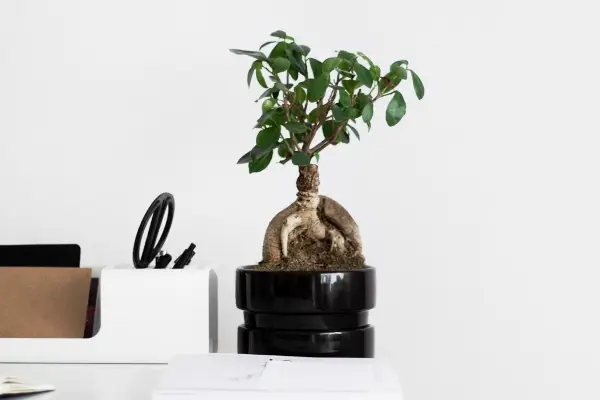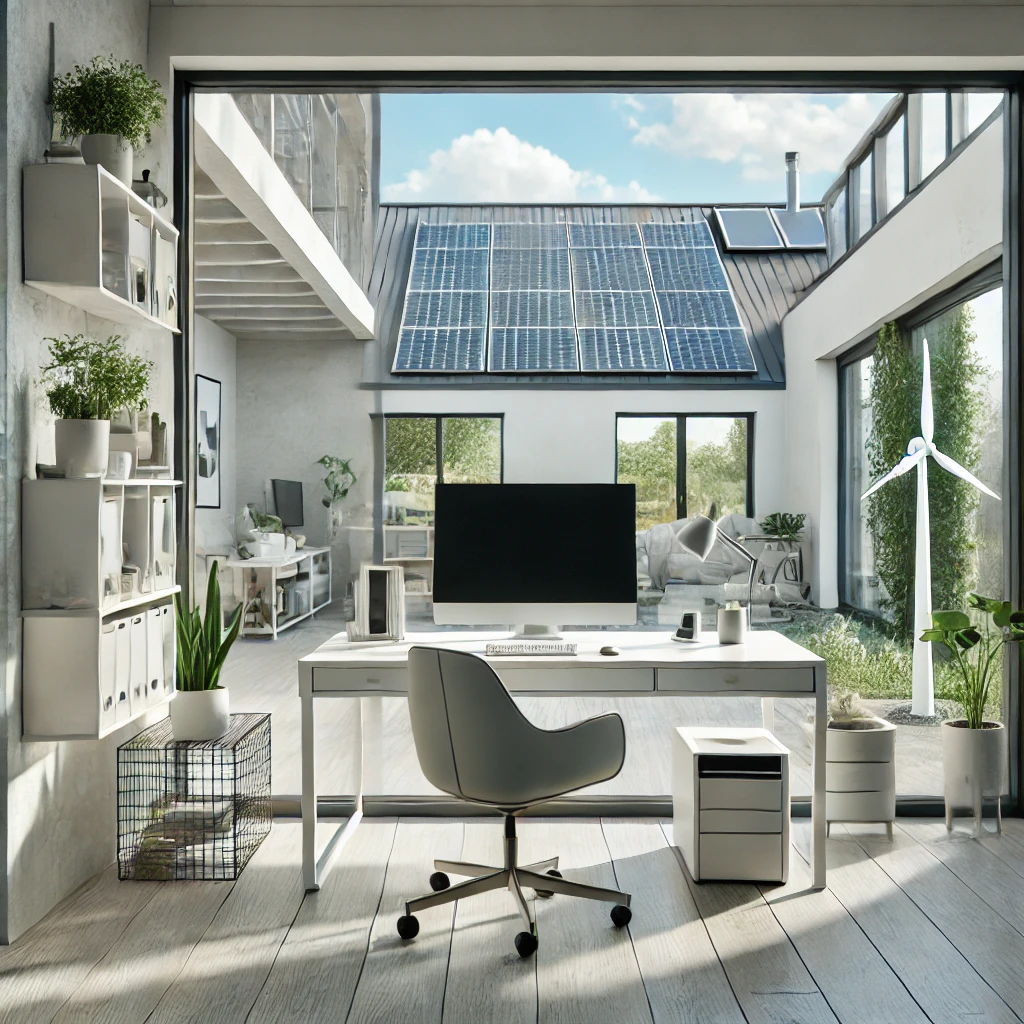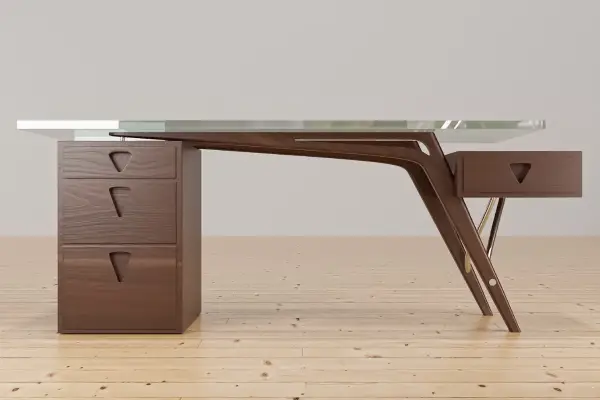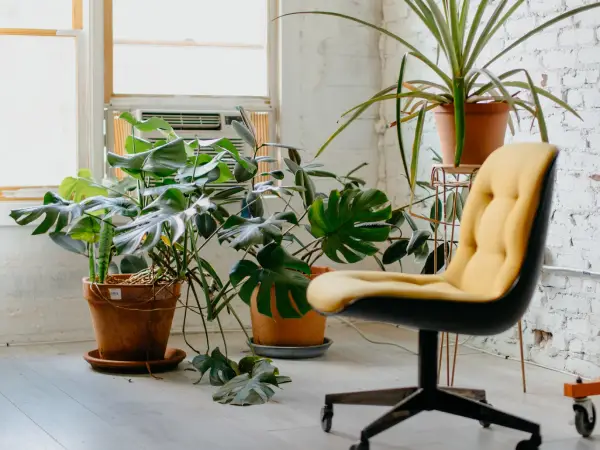Creating a workspace that is both simple and stylish can transform the way you work and feel in your office. Minimalist office decor is all about emphasizing simplicity, functionality, and beauty, leading to a clutter-free environment that boosts productivity and reduces stress. In today’s fast-paced world, having a serene and organized space to work in is more important than ever.
In this article, we’ll explore a range of minimalist office decor ideas that are not only easy to implement but also incredibly stylish. From furniture selection and color schemes to lighting and personalized touches, we’ll cover everything you need to know to create a minimalist office that inspires creativity and efficiency. Whether you’re setting up a new office or looking to refresh your current space, these tips and ideas will help you design a workspace that is both functional and aesthetically pleasing.
Get ready to dive into the world of minimalist office decor and discover how you can create a simple yet stylish workspace that reflects your personality and meets your professional needs. Let’s start this journey towards a more organized, beautiful, and productive office environment!
Essential Principles of Minimalist Decor
Embracing minimalist decor means adopting a mindset that values simplicity and functionality. It’s not just about having fewer items, but about making deliberate choices that enhance your workspace and contribute to a calm, organized environment. Let’s dive into the core principles of minimalist decor and understand how they can transform your office.
Simplicity and Functionality: At its heart, minimalism is about stripping away the unnecessary and focusing on what truly matters. In your office, this means selecting furniture and decor that serve a clear purpose. Every item should have a function, reducing visual clutter and creating a more efficient workspace. Think sleek desks with built-in storage, multi-purpose chairs, and decor that doubles as organizational tools.
Benefits of a Clutter-Free Workspace: A clutter-free workspace isn’t just visually pleasing—it can also significantly boost your productivity and mental clarity. When your desk is free of unnecessary items, it’s easier to focus on the task at hand. A tidy environment reduces distractions, helping you maintain concentration and work more efficiently. Plus, a clean space can reduce stress and create a more pleasant working atmosphere.
Key Elements of Minimalist Design: Minimalist design is characterized by clean lines, neutral color palettes, and an emphasis on quality over quantity. Start with a neutral base—whites, grays, and muted tones—and add texture through natural materials like wood and metal. Keep your decor simple and elegant, with a few well-chosen pieces that add personality without overwhelming the space.
By incorporating these essential principles, you can create an office that not only looks great but also enhances your work performance and well-being. In the next section, we’ll explore how to choose the right furniture that embodies these minimalist ideals, ensuring your workspace is both functional and stylish.
Furniture Selection: The Foundation of Minimalist Design
Choosing the right furniture is crucial in creating a minimalist office that balances functionality and aesthetics. The furniture you select sets the tone for the entire workspace, so it’s important to make thoughtful choices that enhance your productivity while maintaining a clean, stylish look.
Minimalist Desk: Design and Functionality: The desk is the centerpiece of your office, and in a minimalist setup, it should be sleek, simple, and functional. Opt for a desk with clean lines and minimal embellishments. Look for features like built-in drawers or compartments to keep essentials out of sight and maintain a clutter-free surface. A standing desk or a convertible sit-stand desk can also be a great choice for adding versatility without sacrificing style.
Ergonomic and Stylish Seating Options: Comfort is key when it comes to office chairs, but that doesn’t mean you have to compromise on style. Choose an ergonomic chair with a streamlined design that provides support for long hours of work. Look for chairs with adjustable features to ensure they fit your body perfectly. Consider materials like mesh or leather in neutral colors that complement your minimalist decor.
Multi-Purpose Storage Solutions: Effective storage is essential for maintaining a minimalist office. Select storage solutions that blend seamlessly with your furniture. Modular shelving units, minimalist cabinets, and floating shelves are excellent options. These pieces should offer ample storage without taking up too much space or adding visual clutter. Think about closed storage to hide away items and open shelving for a few curated decor pieces or frequently used items.
Minimalist Office Accessories: Even the accessories in your office should adhere to minimalist principles. Choose desk organizers, pen holders, and file trays that are both functional and visually pleasing. Opt for materials like wood, metal, or acrylic in simple designs. Keep your accessories to a minimum to avoid clutter and ensure everything has a designated place.
By focusing on these key aspects of furniture selection, you can create a minimalist office that is both functional and stylish. In the next section, we’ll explore how to use color and textures to add depth and interest to your minimalist workspace, ensuring it remains visually appealing without sacrificing simplicity.
Color Palette and Textures: Creating a Serene and Stylish Workspace
A well-chosen color palette and thoughtful use of textures can elevate your minimalist office from simple to stunning. While minimalism often emphasizes simplicity, incorporating subtle variations in color and texture can add depth and interest to your workspace without compromising its clean and uncluttered aesthetic.
Neutral Color Schemes for a Serene Environment: Neutral colors are the cornerstone of minimalist design. Whites, beiges, grays, and soft earth tones create a calming backdrop that promotes focus and reduces distractions. These hues reflect light, making your space feel more open and airy. Start with a neutral base for your walls, furniture, and larger decor pieces, and build from there.
Incorporating Subtle Textures for Visual Interest: While a monochromatic color scheme sets the foundation for a minimalist office, incorporating different textures can add warmth and character. Think about mixing materials like smooth wood, soft fabrics, and sleek metals. For example, pair a wooden desk with a metal lamp and a fabric chair. Textured rugs, cushions, or wall hangings can also introduce tactile elements that make the space feel more inviting.
Using Accent Colors Sparingly: In a minimalist office, accent colors should be used sparingly to maintain the overall simplicity. Choose one or two complementary accent colors and integrate them through small decor items like cushions, artwork, or office supplies. Soft pastels or muted tones can add a subtle pop of color without overwhelming the space. The key is to create visual interest without disrupting the cohesive and serene atmosphere.
Layering Shades and Tones: To add depth without clutter, consider layering different shades and tones of your chosen neutrals. For example, a light gray wall can be complemented by a slightly darker gray desk and a charcoal chair. This approach maintains the minimalist aesthetic while adding a sophisticated and nuanced look to your office.
By carefully selecting your color palette and textures, you can create a minimalist office that is both serene and stylish. This balance of simplicity and sophistication will make your workspace not only visually appealing but also a joy to work in. In the next section, we will delve into lighting solutions that enhance the ambiance and functionality of your minimalist office.
Lighting Solutions: Enhancing Ambiance and Productivity
Lighting plays a crucial role in creating a minimalist office that is both functional and inviting. The right lighting can enhance the ambiance, improve your focus, and highlight the beauty of your decor. Here’s how to use lighting effectively in your minimalist workspace:
Maximizing Natural Light: Natural light is one of the best assets in a minimalist office. It creates a bright and airy atmosphere, reduces the need for artificial lighting, and can boost your mood and productivity. Position your desk near a window to take full advantage of natural light throughout the day. Use sheer curtains or blinds that allow light to filter in while maintaining privacy. Reflective surfaces, like mirrors or glossy finishes, can help bounce natural light around the room, making it feel more spacious.
Selecting Minimalist Desk Lamps: A well-chosen desk lamp can serve as both a functional tool and a stylish decor element. Look for lamps with clean lines and simple designs that complement your minimalist aesthetic. Adjustable or articulating arms allow you to direct light where you need it most, enhancing task lighting without adding clutter. LED lamps are an excellent choice for their energy efficiency and sleek design options.
Creating Ambient Lighting: Ambient lighting sets the overall mood of your office and provides a base layer of illumination. Consider minimalist overhead lighting fixtures like pendant lights or recessed lighting that blend seamlessly with the ceiling. Soft, diffused light creates a warm and inviting atmosphere without casting harsh shadows. For a touch of elegance, opt for fixtures with simple geometric shapes or natural materials like wood and metal.
Accent Lighting for Focus and Style: Use accent lighting to highlight specific areas or features in your office. Wall-mounted sconces, under-shelf lighting, or small spotlights can draw attention to artwork, shelving, or architectural details. This type of lighting adds depth and dimension to your workspace without overpowering the minimalist design.
Layering Lighting for Functionality: Combining different types of lighting—natural, task, ambient, and accent—creates a versatile and well-lit office environment. Layering your lighting allows you to adjust the illumination based on the time of day and your specific tasks, ensuring that your workspace is always optimally lit.
By thoughtfully incorporating these lighting solutions, you can enhance the ambiance and functionality of your minimalist office. The right lighting not only improves your work experience but also complements your decor, making your office a more pleasant and productive place to be. In the next section, we will explore how to choose and arrange wall art and decor to add personality and style to your minimalist workspace.
Wall Art and Decor: Adding Personality and Style
In a minimalist office, wall art and decor play a vital role in infusing personality and style without disrupting the clean and uncluttered look. Thoughtfully chosen pieces can inspire creativity, enhance focus, and reflect your unique taste. Here’s how to select and arrange wall art and decor in your minimalist workspace:
Choosing Minimalist Wall Art and Prints: When selecting wall art, opt for pieces that resonate with you and complement the minimalist aesthetic. Look for simple, abstract designs, black-and-white photography, or artwork with clean lines and muted colors. Geometric patterns and nature-inspired prints can also add visual interest while maintaining a serene vibe. Remember, less is more—choose a few key pieces rather than overcrowding your walls.
Incorporating Functional Decor Pieces: Decor items in a minimalist office should serve a dual purpose whenever possible. Consider functional decor like stylish clocks, sleek shelving, or wall-mounted organizers that help keep your space tidy while adding a decorative touch. Floating shelves can display a few curated items such as books, plants, or small sculptures, contributing to the decor without creating clutter.
Using Mirrors and Clocks to Enhance the Space: Mirrors are a fantastic addition to a minimalist office. They reflect light, making the space feel larger and brighter, and they can serve as elegant decorative elements. Choose mirrors with simple frames that blend seamlessly with your overall decor. Clocks, on the other hand, combine functionality with style. Opt for minimalist designs with clean lines and neutral colors that complement your office’s aesthetic.
Creating a Focal Point with Art: One or two well-placed pieces of art can create a striking focal point in your office. A large, statement piece above your desk or on a prominent wall draws the eye and adds a touch of sophistication. Alternatively, a small gallery wall with a cohesive theme can add personality without overwhelming the space. Use similar frames and a consistent color palette to maintain harmony.
Balancing Art with Negative Space: In minimalist design, negative space (the empty areas around and between objects) is just as important as the decor itself. Ensure that your wall art and decor have enough breathing room. This balance prevents the space from feeling cluttered and maintains the clean, airy feel that is central to minimalism. Resist the urge to fill every wall and surface; instead, let each piece stand out.
By thoughtfully selecting and arranging wall art and decor, you can add personality and style to your minimalist office while preserving its clean and uncluttered look. These elements not only enhance the visual appeal of your workspace but also contribute to a more inspiring and productive environment. In the next section, we will explore how incorporating greenery and natural elements can further enrich your minimalist office decor.
Greenery and Natural Elements: Bringing Life to Your Minimalist Office
Adding greenery and natural elements to your minimalist office can create a refreshing and vibrant atmosphere, boosting both your mood and productivity. Plants and natural materials introduce a touch of nature into your workspace, enhancing its aesthetic and providing numerous benefits. Here’s how to incorporate these elements effectively:
Benefits of Adding Plants to Your Office: Plants are not only beautiful but also beneficial for your health and well-being. They improve air quality by absorbing toxins and releasing oxygen, helping you breathe easier. Additionally, having plants in your office can reduce stress, increase productivity, and create a more pleasant working environment. The presence of greenery can also inspire creativity and focus, making it an essential element of a productive workspace.
Selecting Low-Maintenance Plants for a Minimalist Look: When choosing plants for your office, opt for low-maintenance varieties that thrive indoors and require minimal care. Succulents, cacti, snake plants, and pothos are excellent choices, as they are hardy and can tolerate varying light conditions. These plants typically have clean lines and simple shapes that complement the minimalist aesthetic. Group a few small pots together or place a single larger plant in a stylish planter to add a touch of greenery without overwhelming the space.
Incorporating Natural Materials Like Wood and Stone: Natural materials such as wood and stone add warmth and texture to your minimalist office. Consider incorporating wooden furniture, like a sleek desk or shelving units, to bring a touch of nature indoors. Stone accessories, such as a marble paperweight or a stone tray, can add subtle elegance and interest to your workspace. These materials not only enhance the aesthetic but also create a more grounded and calming environment.
Balancing Greenery with Minimalist Decor: The key to integrating plants and natural elements in a minimalist office is balance. Avoid overcrowding your space with too many plants or decorative items. Instead, choose a few well-placed pieces that harmonize with your existing decor. For instance, a potted plant on your desk, a hanging planter near the window, or a small terrarium on a shelf can add just the right amount of greenery without creating clutter.
Using Plants to Define Spaces: Plants can also be used to define different areas within your office. For example, a tall plant can serve as a natural divider between your work area and a relaxation corner. Smaller plants on a shelf or windowsill can delineate different zones while maintaining the open, airy feel of a minimalist design. This subtle zoning can help you stay organized and focused.
By incorporating greenery and natural elements into your minimalist office, you can create a space that feels alive and welcoming. These touches of nature not only enhance the visual appeal of your workspace but also contribute to a healthier, more productive environment. In the next section, we’ll discuss organizational tools and strategies to keep your minimalist office tidy and efficient.
Organizational Tools and Strategies: Keeping Your Minimalist Office Tidy
Maintaining a clutter-free environment is essential for a minimalist office, as it helps you stay focused, productive, and stress-free. Effective organization not only enhances the aesthetic of your workspace but also ensures that everything you need is easily accessible. Here are some tools and strategies to keep your minimalist office tidy:
Streamlined Storage Solutions: Invest in storage solutions that are both functional and stylish. Minimalist shelving units, cabinets, and drawers can help keep your office essentials neatly tucked away. Opt for furniture with built-in storage to maximize space efficiency. Floating shelves can provide additional storage without taking up floor space, perfect for displaying a few curated items or storing frequently used tools.
Decluttering Techniques: Regularly decluttering your office is crucial to maintaining a minimalist aesthetic. Adopt the habit of tidying up at the end of each day, ensuring that everything is in its designated place. Use the “one in, one out” rule: for every new item you bring into your office, remove one that you no longer need. This practice helps prevent accumulation and keeps your workspace streamlined.
Minimalist Desk Organization: Your desk is the central hub of your office, so keeping it organized is vital. Use desk organizers, trays, and compartments to store stationery, documents, and tech accessories. Choose organizers that match your minimalist style, such as those made of wood, metal, or acrylic. Keep only the essentials on your desk to maintain a clean and uncluttered surface.
Cable Management Solutions: Cables and cords can quickly create visual clutter in an otherwise minimalist office. Use cable management tools like clips, ties, and sleeves to keep cords organized and out of sight. Consider wireless devices to reduce the number of cables on your desk. A cable box or a desk with built-in cable management features can also help keep things tidy.
Digital Organization: Minimalism extends beyond physical clutter to digital clutter as well. Keep your computer desktop and email inbox organized by regularly deleting unnecessary files and emails. Use cloud storage and digital tools to minimize the need for physical paperwork. Organize your digital files into clearly labeled folders for easy access and efficiency.
Personalized Storage Systems: Tailor your storage solutions to fit your specific needs and work habits. If you frequently use certain items, keep them within easy reach, and store less-used items further away. Customize your storage systems to suit your workflow, ensuring that everything has a designated place and can be easily found when needed.
Labeling and Color Coding: Use labeling and color coding to enhance your organizational system. Label drawers, shelves, and storage boxes to quickly identify their contents. Color-coded folders and files can make it easier to locate important documents at a glance. This simple strategy adds an extra layer of organization and efficiency to your minimalist office.
By implementing these organizational tools and strategies, you can maintain a tidy and efficient minimalist office. A well-organized workspace not only looks great but also supports your productivity and focus. In the next section, we’ll discuss how to incorporate technology seamlessly into your minimalist office design.
Seamlessly Incorporating Technology: Enhancing Your Minimalist Office
In a modern minimalist office, technology plays a crucial role in boosting productivity and efficiency. However, integrating tech seamlessly without disrupting the clean aesthetic can be challenging. Here’s how to incorporate technology into your minimalist workspace while maintaining a sleek and clutter-free environment:
Choosing Sleek and Minimalist Tech Devices: Opt for devices with clean lines and minimalist designs. Laptops, monitors, and keyboards that feature slim profiles and neutral colors blend seamlessly into a minimalist office. Brands like Apple, with their emphasis on minimalist aesthetics, offer a range of devices that align with this design philosophy. A dual-purpose device, such as a monitor that also charges your laptop or a multifunctional printer, can reduce the number of gadgets on your desk.
Wireless Solutions for a Clutter-Free Space: Embrace wireless technology to minimize the visual clutter of cables. Wireless keyboards, mice, and headphones keep your desk looking tidy. Invest in a high-quality wireless charger for your phone and other devices. Consider a wireless printer or scanner to reduce the number of cables running across your workspace. Wireless solutions not only look better but also offer greater flexibility in arranging your office.
Effective Cable Management: For devices that require cables, effective cable management is essential. Use cable clips, ties, and sleeves to bundle and hide cords. Run cables along the edges of your desk or under it to keep them out of sight. A cable box can house power strips and excess cords, maintaining a neat appearance. Some desks come with built-in cable management features, which can be a worthwhile investment for a minimalist office.
Minimalist Monitor Stands and Mounts: Elevate your monitor with a sleek stand or mount it on the wall to save desk space. Monitor stands can also provide additional storage underneath, keeping your desk surface clear. Wall mounts or adjustable arms offer flexibility in positioning your screen while maintaining a clean look. Choose options that match your office’s minimalist style, typically featuring simple and streamlined designs.
Smart Home Office Gadgets: Integrate smart home office gadgets to enhance convenience and efficiency. Voice-controlled assistants like Amazon Echo or Google Nest can help manage your schedule, control lighting, and play music, all without adding visual clutter. Smart plugs and switches can streamline your setup and reduce the number of visible devices. These gadgets add functionality while keeping your workspace neat and organized.
Digital Decluttering: Keep your digital workspace as organized as your physical one. Regularly clean up your desktop, organize files into folders, and use cloud storage to minimize the need for physical storage devices. Apps and tools that enhance productivity, such as task managers or note-taking apps, can reduce the need for paper and other physical clutter. A digital calendar and to-do list can replace traditional planners, freeing up desk space.
Integrating Tech with Decor: Blend technology with your decor by choosing devices that complement your minimalist style. Consider hiding larger devices in stylish storage units when not in use. Use decorative boxes or trays to house smaller tech items like USB drives, external hard drives, or chargers. This approach keeps your technology accessible but out of sight, maintaining the clean lines of your minimalist office.
By thoughtfully integrating technology into your minimalist office, you can create a workspace that is both functional and aesthetically pleasing. Seamlessly incorporated tech enhances your productivity without compromising the clean and uncluttered look of your office. In the next section, we’ll wrap up with some final tips and encouragement to personalize your minimalist office decor for a space that truly reflects your style and needs.
Personalizing Your Minimalist Office: Final Tips and Inspiration
As we conclude our journey through creating a minimalist office, it’s essential to reflect on how to personalize your space while maintaining its clean and uncluttered aesthetic. Personal touches can make your workspace feel inviting and inspire creativity, all while aligning with minimalist principles. Here are some final tips and inspiration to personalize your minimalist office:
Curate Meaningful Decor: Choose decor items that resonate with you personally. Whether it’s artwork, photographs, or mementos from travels, select pieces that bring joy and inspiration. Keep in mind the minimalist mantra of “less is more” by opting for a few carefully curated items rather than filling every surface.
Incorporate Sentimental Items: Integrate sentimental items that hold personal significance. These could be family heirlooms, handmade crafts, or gifts from loved ones. Display them thoughtfully to add warmth and personal history to your minimalist workspace.
Create a Comfortable Workspace: Invest in ergonomic furniture and accessories that prioritize comfort and functionality. A comfortable chair, adjustable desk, and adequate lighting are essential for long hours of work. Cushions, throws, or a cozy rug can add comfort without cluttering your space.
Experiment with Texture and Materials: While minimalist design often favors simplicity, don’t shy away from experimenting with textures and materials. Incorporate natural textures like wood, stone, or linen for added warmth and visual interest. These elements can enhance the tactile experience of your workspace.
Keep It Functional: Maintain the functionality of your office by ensuring that each item serves a purpose. Avoid decorative items that serve no practical function, as they can disrupt the minimalist flow. Functional decor items, like desk organizers or storage solutions, contribute to both aesthetics and efficiency.
Embrace Simplicity in Design: Strive for simplicity in every aspect of your office design. Clean lines, neutral colors, and uncluttered surfaces create a serene and focused environment. Regularly review and declutter your space to maintain this minimalist aesthetic.
Personalize with Greenery: Use plants and natural elements to infuse life into your workspace. Choose plants that not only complement your decor but also thrive in indoor environments. Greenery adds freshness and vitality while contributing to a healthier indoor atmosphere.
Reflect Your Style: Ultimately, your minimalist office should reflect your unique style and preferences. Whether you prefer a monochromatic palette, a pop of color, or a blend of modern and vintage elements, embrace what resonates with you. Your workspace should be a reflection of your personality and create a conducive environment for work and creativity.
By incorporating these final tips and personal touches, you can create a minimalist office that is both functional and inspiring. Remember, minimalist design is about intentional choices and creating a space that supports your productivity and well-being. We hope this guide has inspired you to craft a workspace that not only meets your practical needs but also reflects your individual style. Share your journey and any additional tips you have for personalizing a minimalist office in the comments below!
Conclusion: Crafting Your Perfect Minimalist Office
Creating a minimalist office is about more than just aesthetics—it’s about designing a space that promotes focus, productivity, and well-being. Throughout this guide, we’ve explored various strategies to help you achieve a clean, organized, and inspiring workspace. From choosing the right color schemes and incorporating functional decor to integrating technology seamlessly and adding personal touches, each step contributes to a harmonious and efficient office environment.
As you embark on transforming your workspace into a minimalist haven, remember the core principles: simplicity, functionality, and personalization. Embrace the beauty of minimalism by decluttering regularly, curating meaningful decor, and maintaining a balance between form and function. Whether you prefer a serene monochromatic palette or a blend of textures and materials, let your office reflect your unique style and preferences.
We encourage you to experiment, adapt, and refine your minimalist office design to suit your evolving needs. Stay inspired by exploring new ideas and incorporating elements that resonate with you. By creating a workspace that aligns with your goals and values, you can cultivate a space where creativity flourishes and productivity thrives.
Thank you for joining us on this journey to discover minimalist office decor ideas. We hope this guide has provided valuable insights and inspiration for crafting your perfect minimalist office. Share your experiences, tips, and favorite minimalist decor ideas in the comments below—we look forward to hearing from you!
Remember, a minimalist office isn’t just about how it looks—it’s about how it makes you feel. Here’s to creating a space that inspires, motivates, and supports your best work yet. Cheers to your minimalist office journey!






